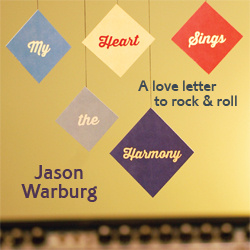If I Can Dream: Elvis Presley With The Royal Philharmonic Orchestra
RCA Legacy, 2015
REVIEW BY: Curtis Jones
ORIGINALLY PUBLISHED: 11/18/2015
Since his death, dozens of second rate Elvis Presley albums have been released. They do a good business, though, keeping the King of Rock and Roll in the public eye and trying to appeal to a new generation that gets its music in ones and zeros rather than on a physical album. Some of those efforts were good, such as ELV1S: 30 #1 Hits and 2nd To None, which demonstrated the sheer girth of Presley’s hit making power by not being able to compile all of his most popular releases on one 80-minute compact disc. Many other releases are entirely pedestrian and offer nothing new. Many are thematic, sticking to love songs or movie hits – but nothing thus far compares to If I Can Dream: Elvis Presley With The Royal Philharmonic Orchestra.
If I Can Dream does something that no other posthumous Presley album has been able to do: to reframe Elvis’ songs and actually make them better by trying to enlarge the sound of the tracks in a way that Priscilla Presley thinks Elvis would have wanted it. There are purists who have and will continue to contend that adding anything to an Elvis track is akin to retranslation of Holy Scripture. But there are good reasons to believe that Priscilla may be on to something. First, Colonel Tom Parker, that dark stultifying cloud that hangs over Presley’s career with a power that astounds and saddens, was keen to dampen the input of the backing band and pump up the singer’s voice on releases. So there were times when Elvis would hear what he wanted in the studio and then be disappointed by the released version. The King did make use of a large backing group during his ‘70s concerts. Take a look at Aloha From Hawaii Via Satellite, which employed six regular members of the TCB band, nine backing vocalists, a twelve-piece string section and a thirteen-piece brass section. Also, there are several tracks that indicate that such a big sound did Elvis a great service. I cite as examples “The Wonder Of You” and “In The Ghetto.”
So backing Elvis with a large, world-class orchestra should work in theory if it is done right. The only thing producers would have to remember is that this is an Elvis album and not a Royal Philharmonic Orchestra album. The result is by and large very tastefully done. My strategy in listening to this album was to listen to the newly orchestrated track back to back with the original release master. The outcome is amazing. Some tracks, like “Burning Love” and a cover of James Taylor’s “Steamroller Blues,” don’t seem like they’d be well suited for a large backing orchestra. But the track comes alive with a new grit and urgency that the originals lack. “Bridge Over Troubled Water” and “In The Ghetto” already had some orchestration to lean on, but the new versions multiply their power immensely.
On tracks like “How Great Thou Art,” “Love Me Tender,” “And the Grass Won’t Pay No Mind,” and “It’s Now or Never,” you are struck with how listless the originals sound in comparison. Now, of course much of the reason for the stripped down style of “Love Me Tender” and other early tracks is based on the constraints of the technology and the cost of employing a large backing band. This was after all, early rock and roll, which operated on a low-cost production, high-profit release strategy. But by the ‘70s, there was no excuse to hold back. I mean, the Beatles were doing it on Sgt. Pepper in 1967 and Chicago was running around blowing horns by then, right?
There are tracks on the album that come up short. A revamped “Fever” does better to hold a listener’s attention than the original’s three and half minutes of finger snapping and bass lines by adding in some orchestral flare. Yet the addition of Michael Bublé hearkens back to some of the worst impulses of posthumous Elvis material, and is as unnecessary as it might be gratifying to Bublé, whose own life overlaps with Presley’s by just under two years. Adding an orchestra to “Can’t Help Falling in Love With You” really adds nothing to the song, and was the only stand out in which I preferred the original. “There’s Always Me” is a short, forgettable track in which you would barely notice if there was orchestration or not because it is so quotidian.
The pièce de résistance is the title track. “If I Can Dream” is a powerful piece in its original form, showing Elvis with more emotion than you ever find on any other release. It was the closing number to the 1968 NBC television appearance that has come to be known as the Comeback Special. Elvis rocked the house for the whole show, and it sparked a creative desire in him that was of course snuffed out by the inimitable straightjacketing of Tom Parker, but in that track he believed every word and felt every note. The new mix heightens it to the next level, and makes one wonder if this had been the version that was released in 1968, would Parker have been able to stop Presley’s ambitions for a world tour, bigger sound and a relevant career. We’ll never know, but If I Can Dream: Elvis Presley With The Royal Philharmonic Orchestra is the best revisit of Elvis Presley’s work that we have ever seen.